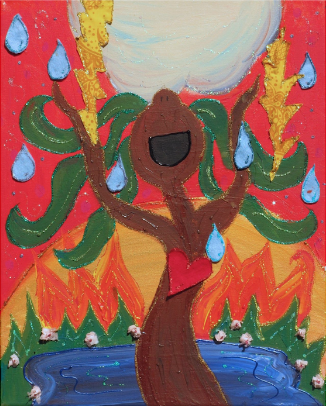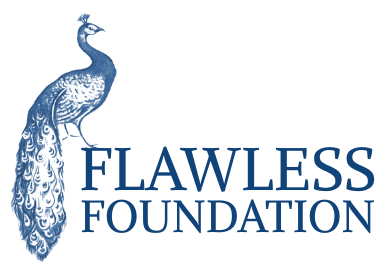By Georgie Blenkey
Flawless Intern

This blog will be talking about topics that may be triggering, so take care while reading or feel free to take a break.
We recently had the opportunity to attend Mental Health America’s annual conference in D.C. The topic was “Dueling Diagnoses,” so a lot of information was shared on what it’s like to deal with physical and mental health diagnoses simultaneously.
We heard from many inspiring speakers, but one breakout session at the conference really stood out to me. It was called “Bridging the Gap of PTSD, Emotional Health and Medical Trauma through Creative Therapies,” with speaker Amy Oestreicher. Amy is a PTSD peer-to-peer specialist, artist, author, health advocate, contributor to The Huffington Post, speaker for RAINN and TEDx, actress, and playwright. In her breakout session, she described how she has used creative outlets to cope with trauma—first through performing onstage, and then by branching out into painting. As someone who is very interested in art therapy and the use of creativity as a coping mechanism, this struck a chord with me.
Intensely traumatic experiences led Amy to discover these coping mechanisms. She suffered sexual abuse from a trusted adult, which was followed by a medical emergency that left her in a coma for six months. Amy survived, but her stomach and digestive tract were permanently damaged, leaving her unable to eat.
Amy had a lot of trouble speaking for a while after she came out of her coma. She explained that it was her voice teacher who had abused her, so it was as if someone had taken her voice away. Amy decided to go into therapy, but the process was initially unsatisfying, and it took her awhile to find a style of therapy that worked for her. She described the relief she felt when she finally discovered painting as a therapeutic tool.
I thought it was really important that Amy talked about her struggles finding the right therapy. We are always being reminded of how amazing it is to be able to talk to someone. But what if—like Amy— you can’t talk? What if you don’t want to talk? I believe that many people experience similar frustrations at some point in the therapy process, and it was refreshing to hear Amy’s honesty about how tough it can sometimes be to find the right fit.
“I think of trauma as a lot of energy that we don’t know what to do with,” Amy said. She described herself as an energetic person, and once she started feeling better, “all this energy came back in ways I didn’t know what to do with—anxious energy, nervous energy.” She explained that this “extra energy” can be channeled into activities that can become coping mechanisms or tools for healing.

Amy Oestreicher helped me understand the complexity of trauma. I learned that multiple traumatic experiences can affect us in different ways at the same time. Amy’s honesty brought light to the fact that no two people heal in exactly the same way.
I left the breakout session feeling very captivated by the idea of using creativity to heal. I understood that the human spirit feeds on hope, and hope is fuel we can cultivate in and for ourselves. “Ultimately, I learned that with resourcefulness, creativity, and unwavering curiosity, we can transform any adversity into personal growth and a resilience that is uniquely ours,” Amy wrote on her website. Poetry, song, performance, dance, and painting are outlets that can turn negative energy into positive energy because—as Amy would say—“energy can neither be created nor destroyed; rather, it can only be transformed or transferred from one form to another.” I was left inspired by the fact that truth-telling, hope and creativity can be healing tools for us all.






